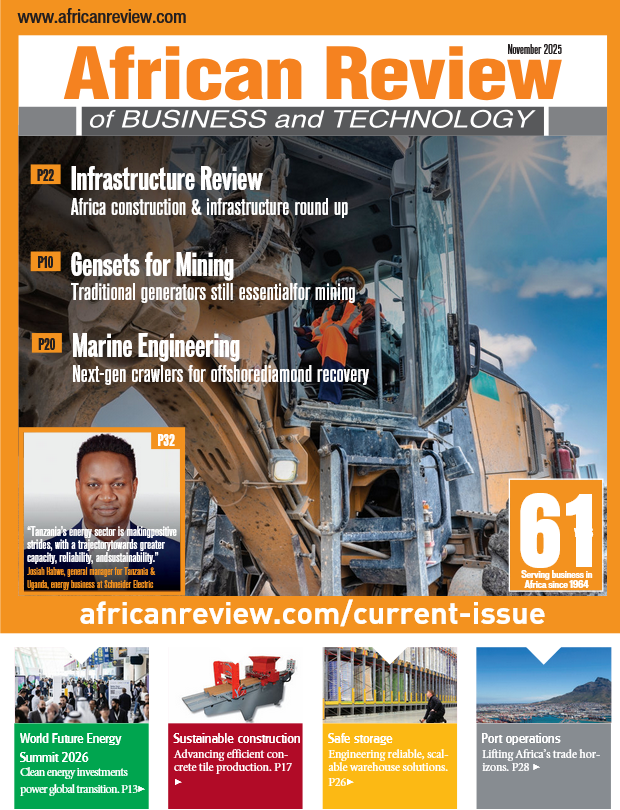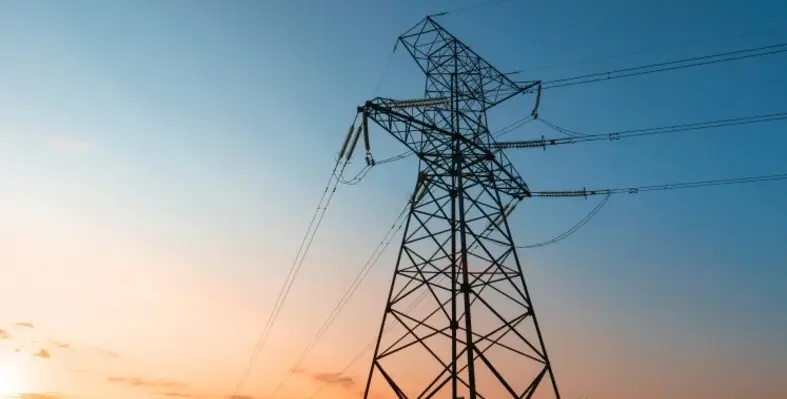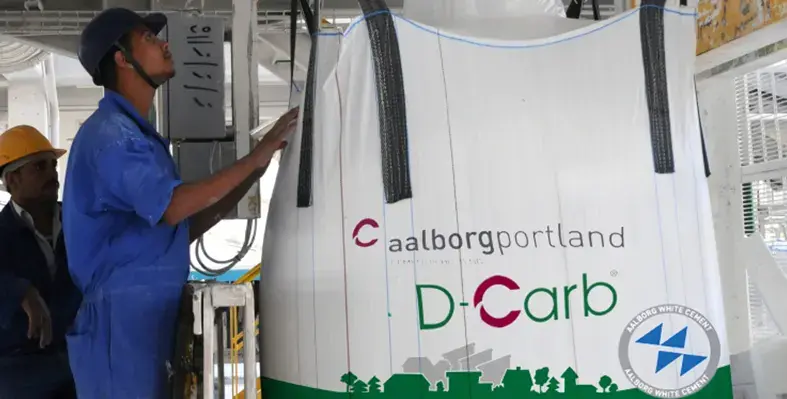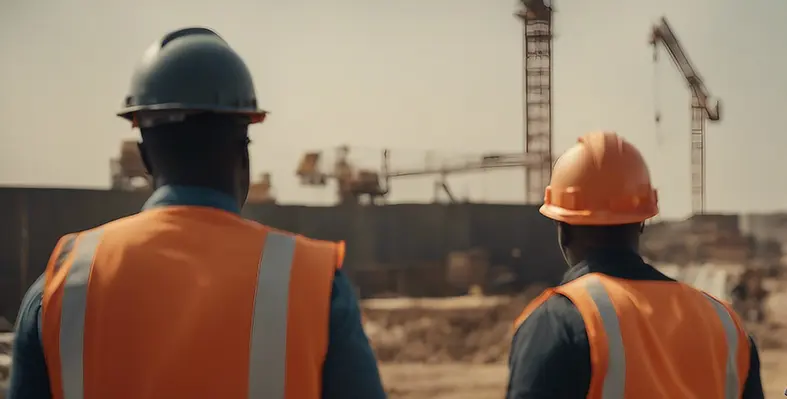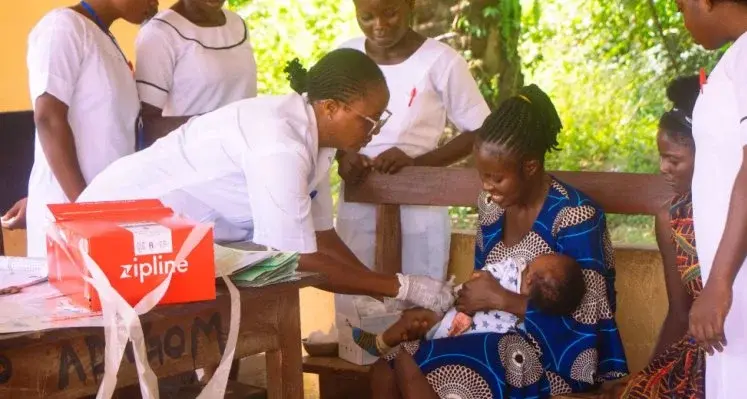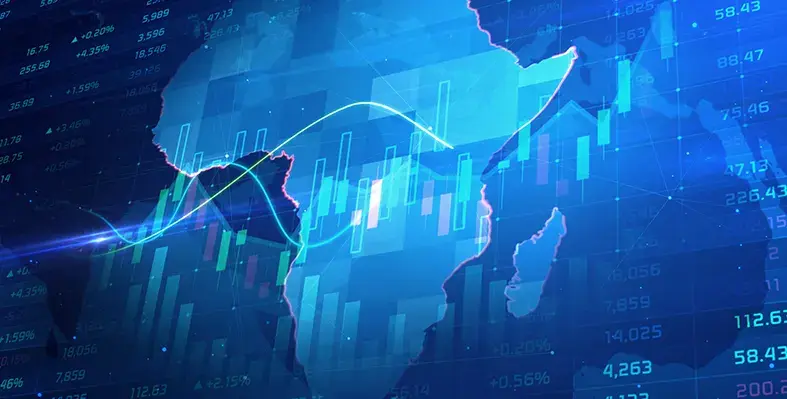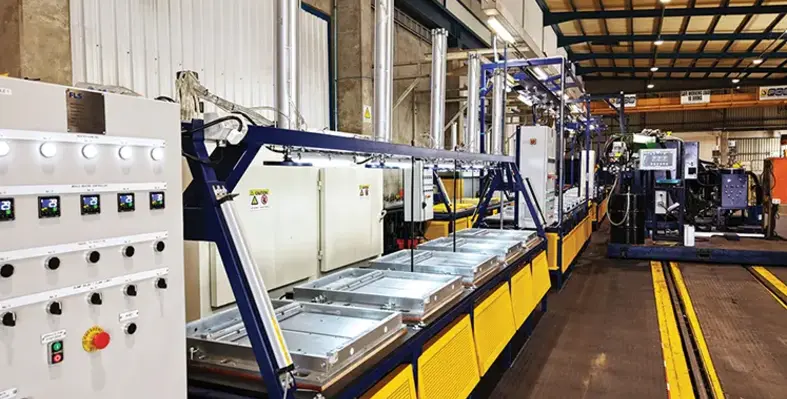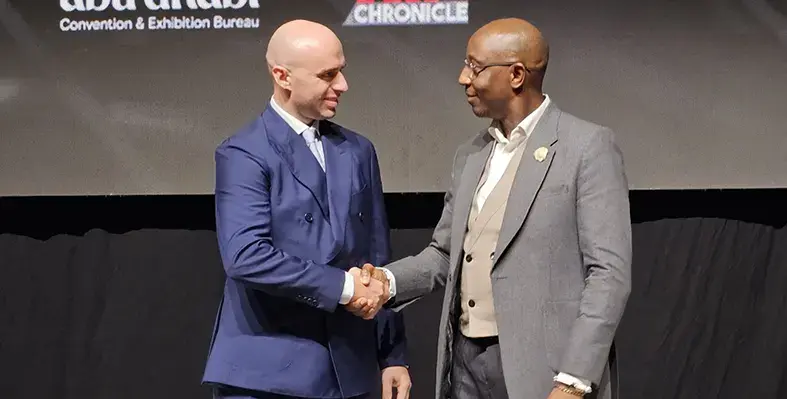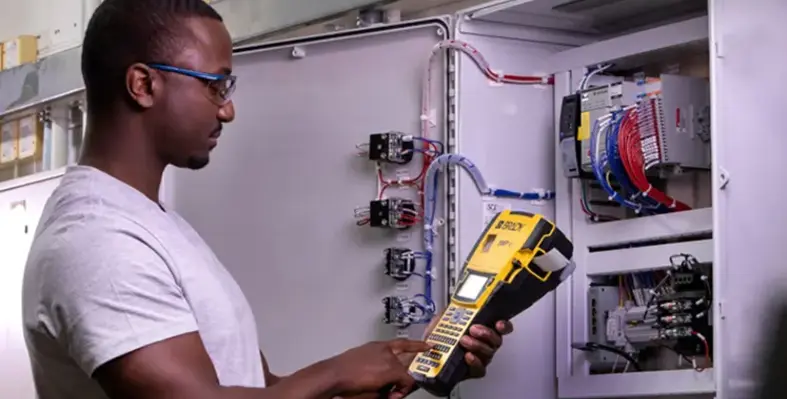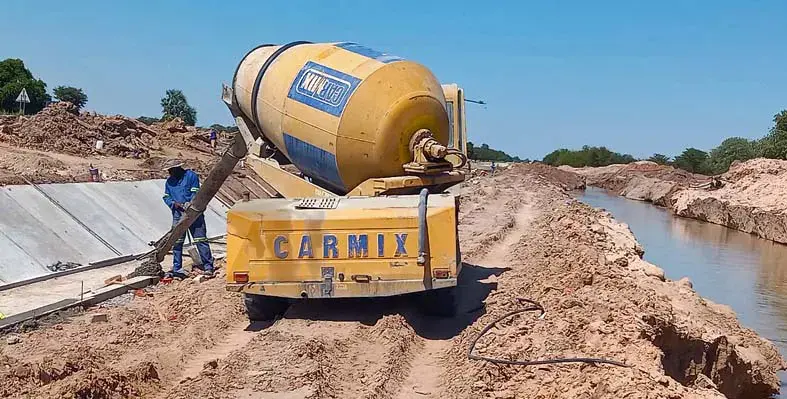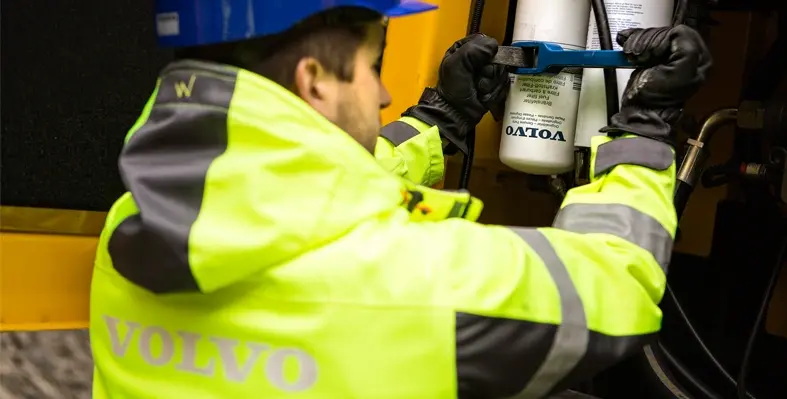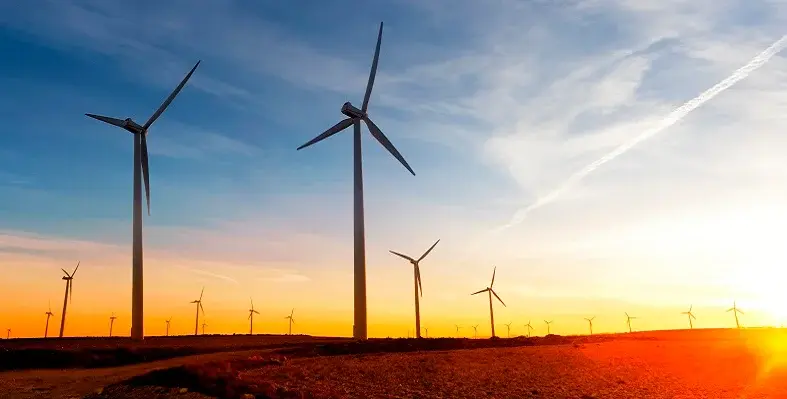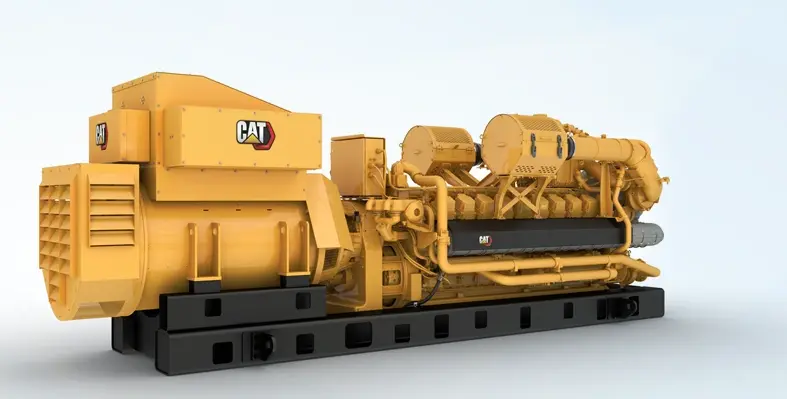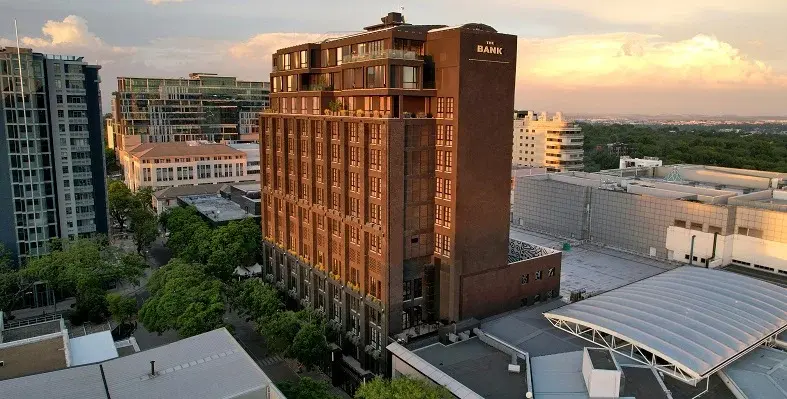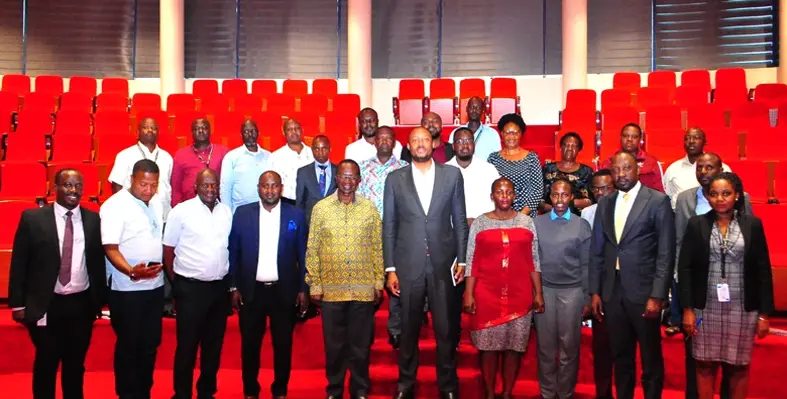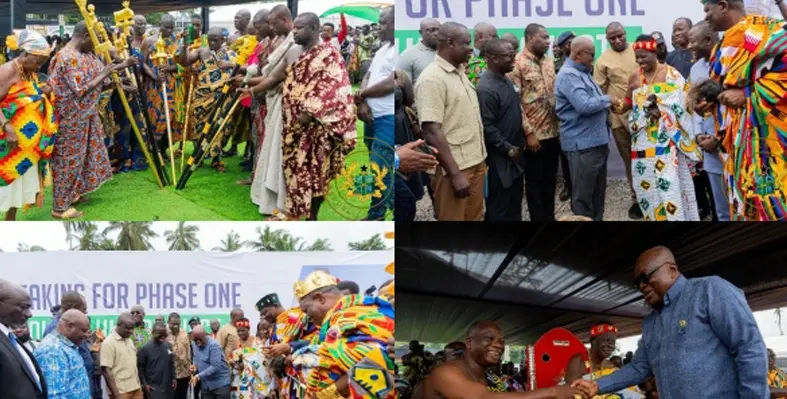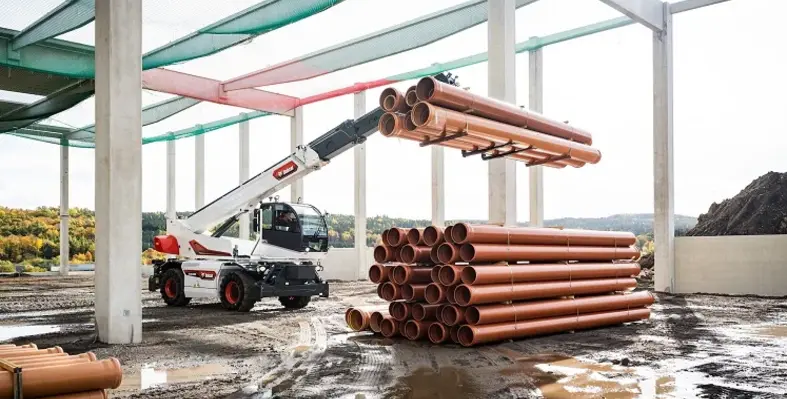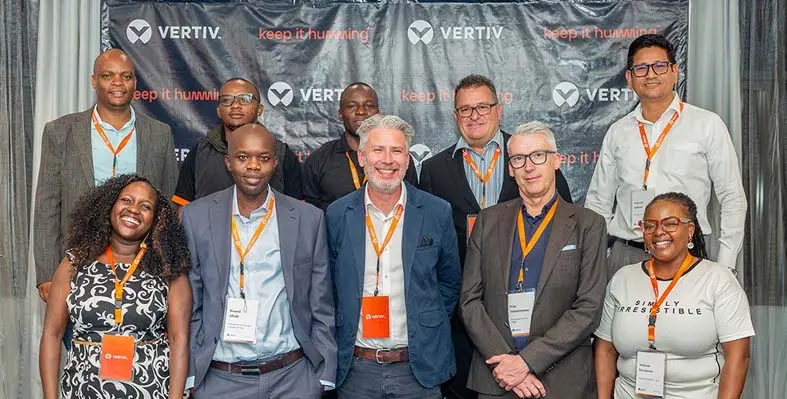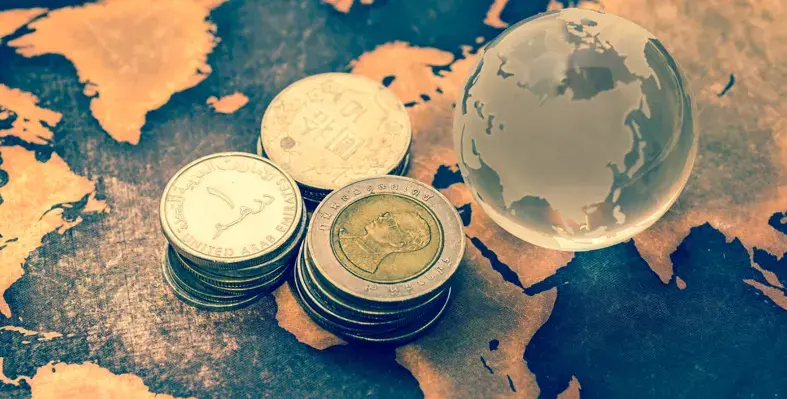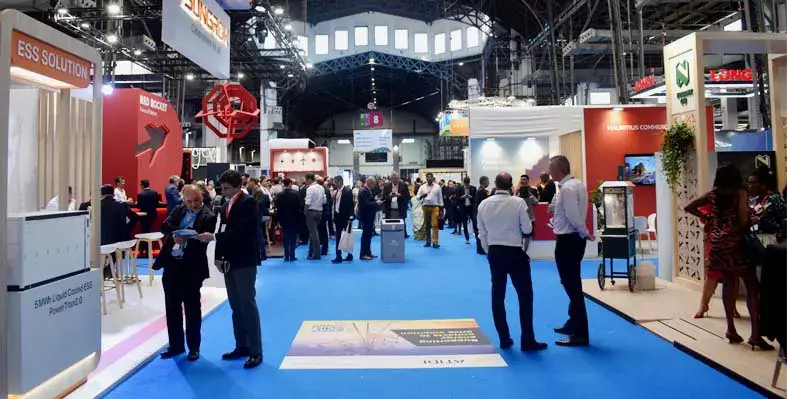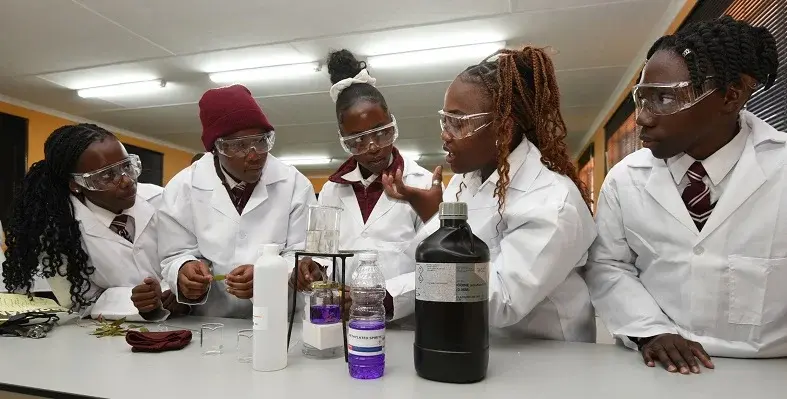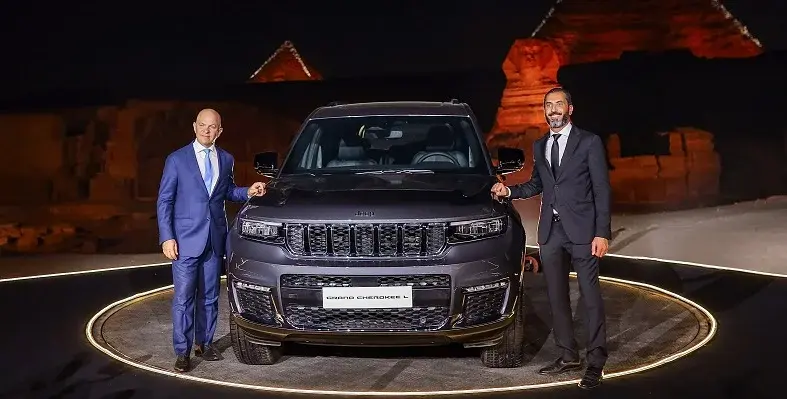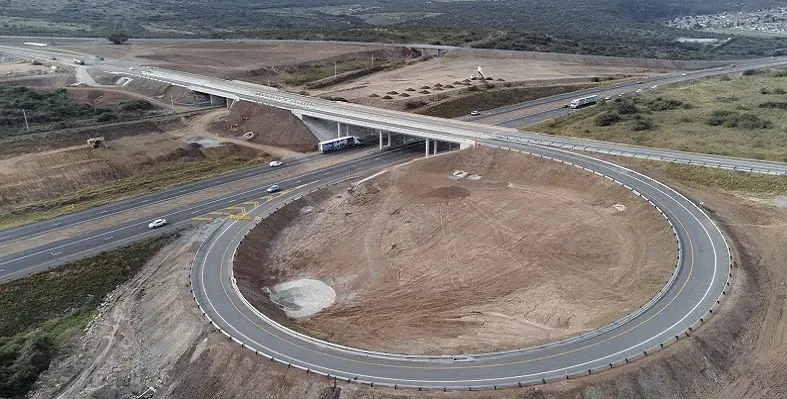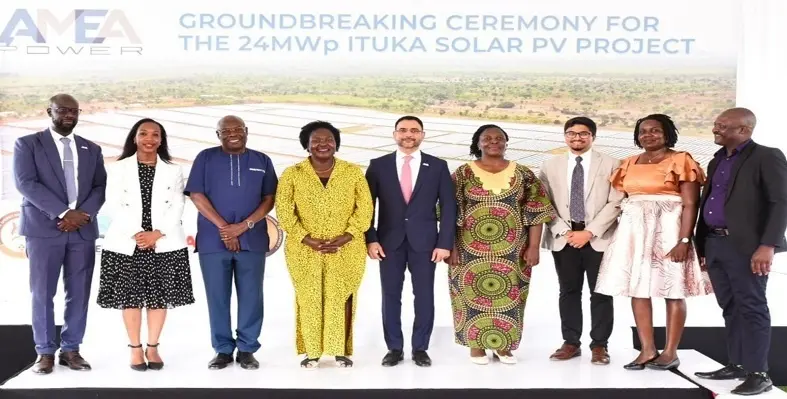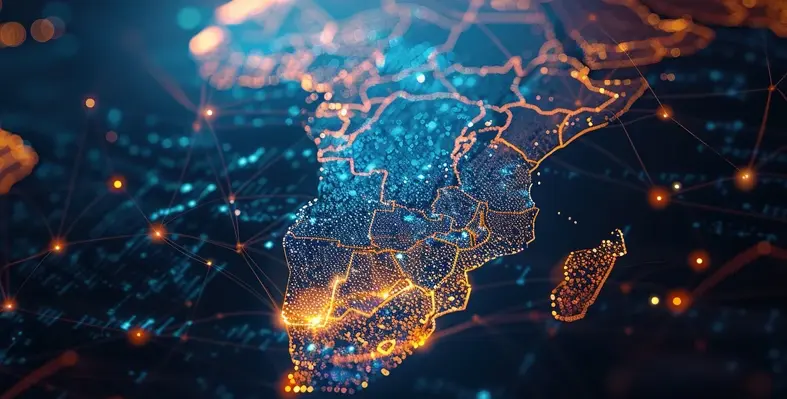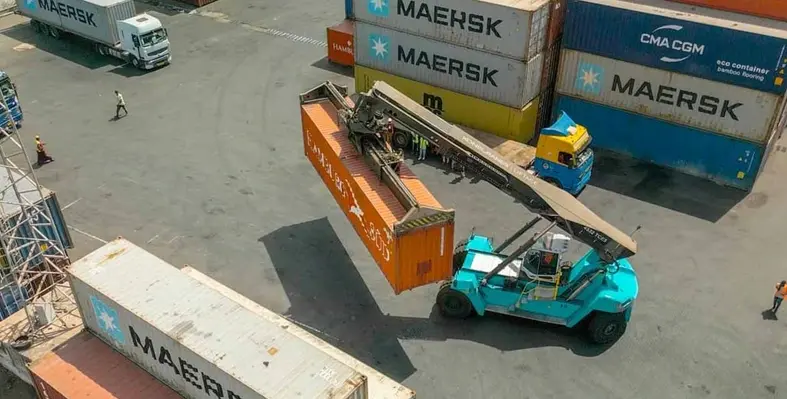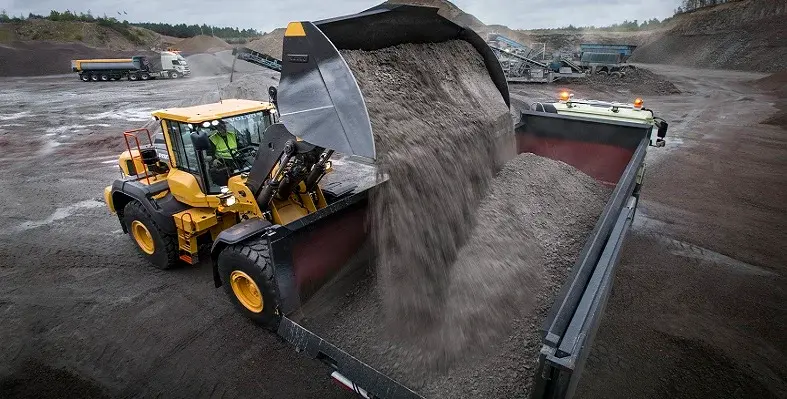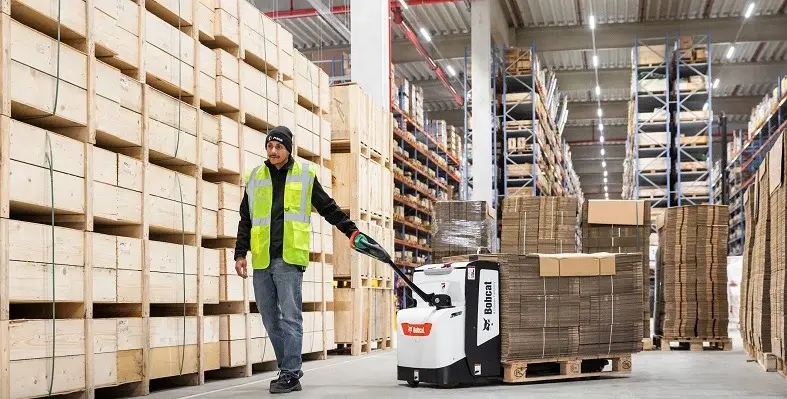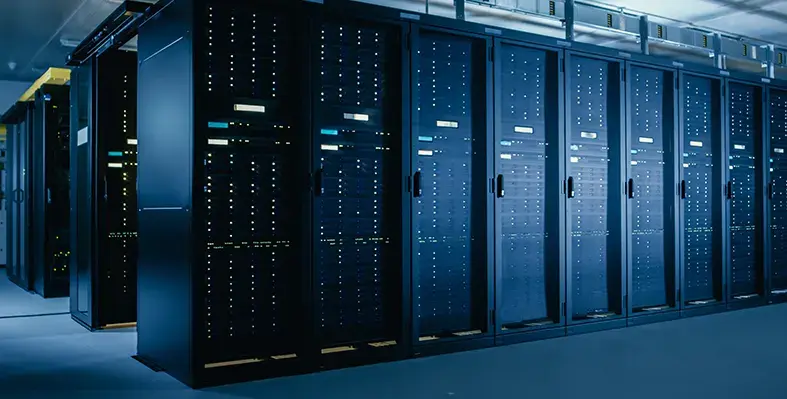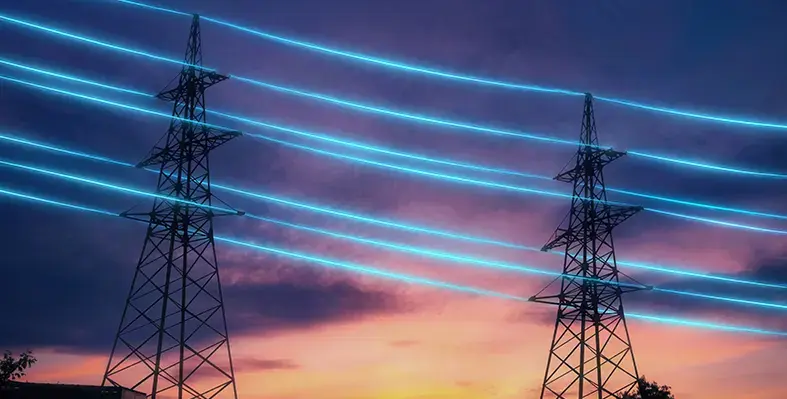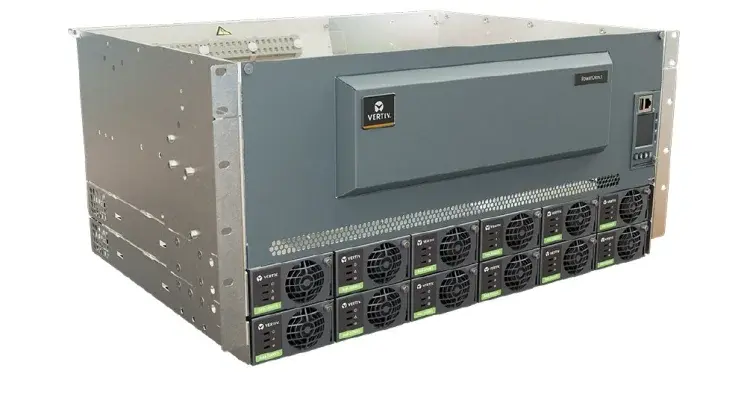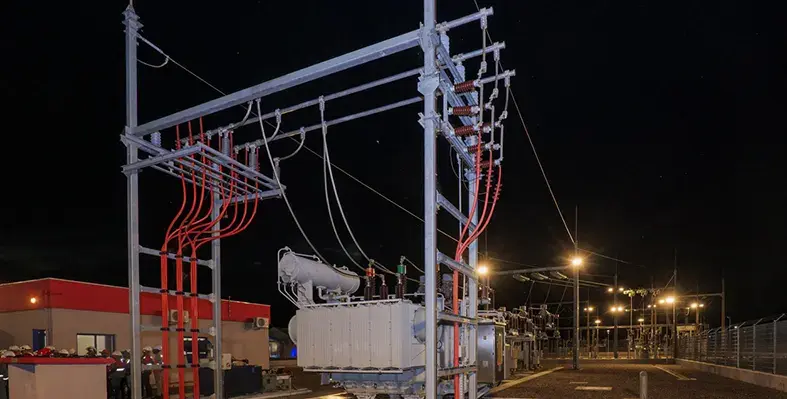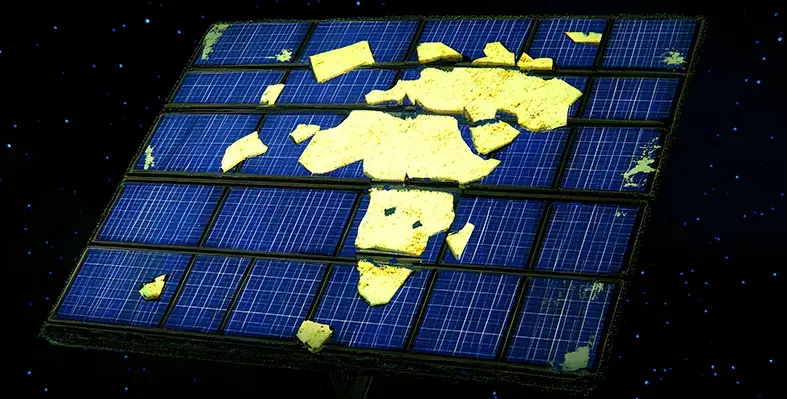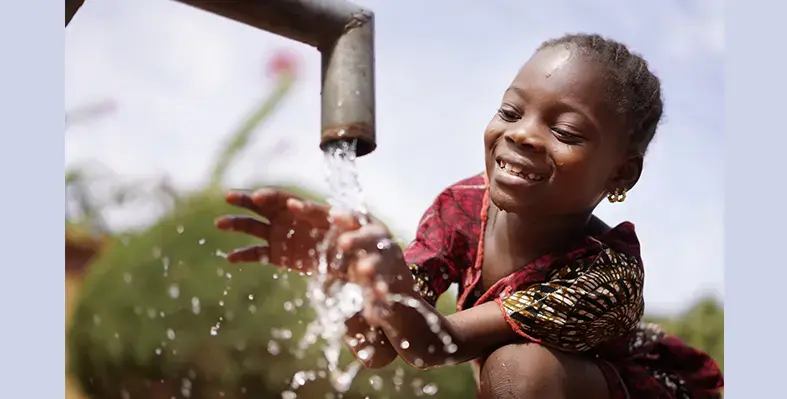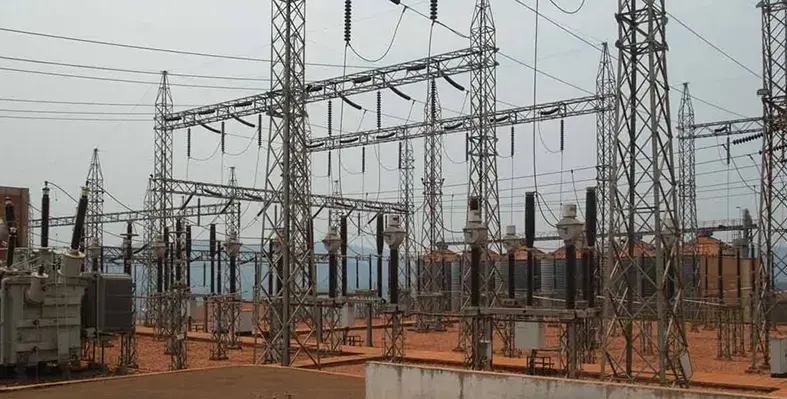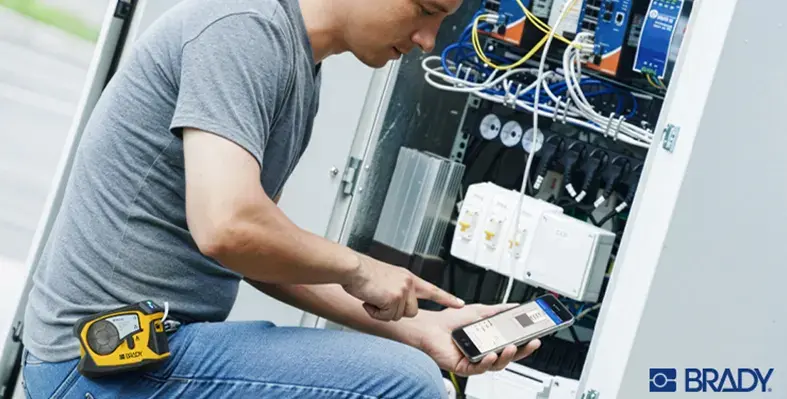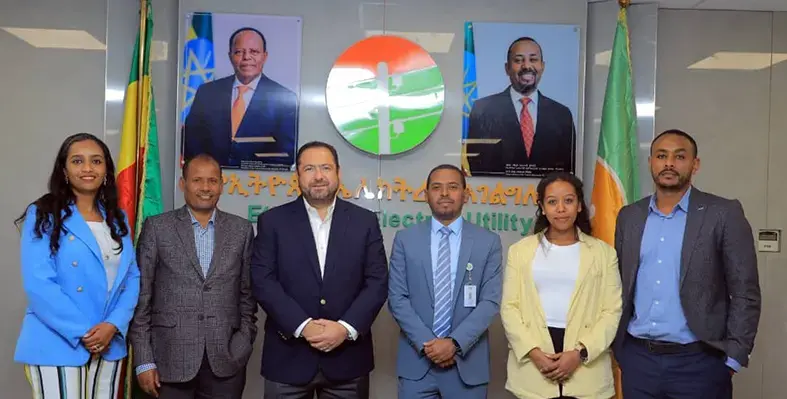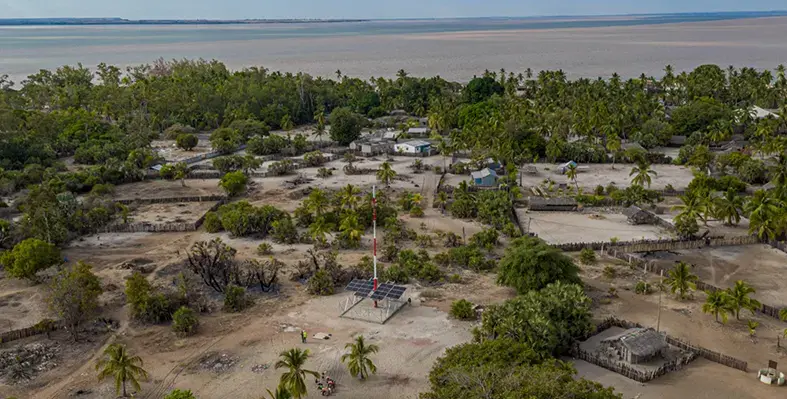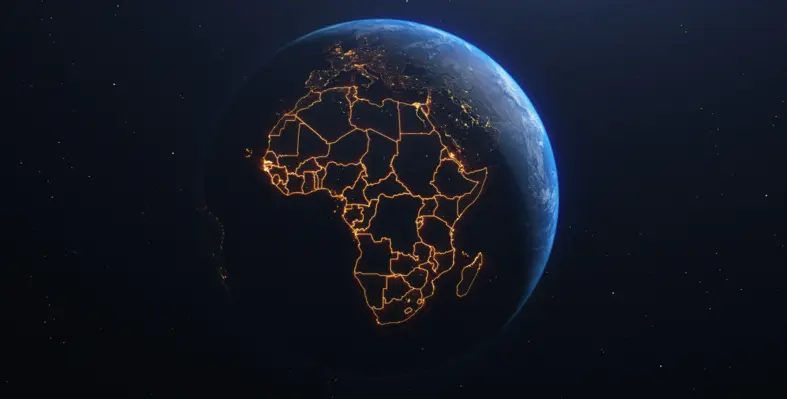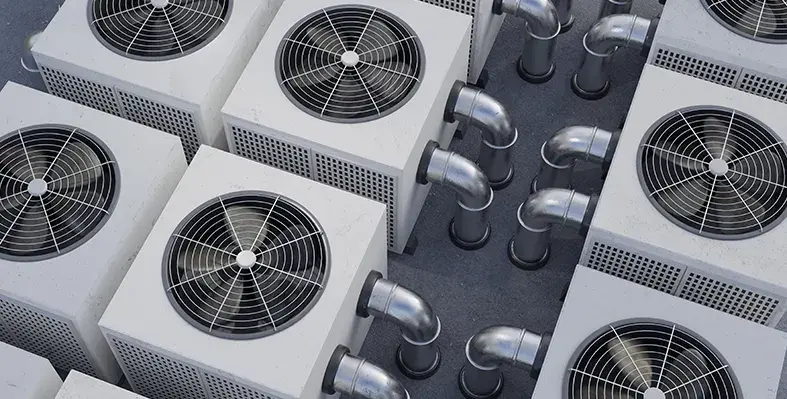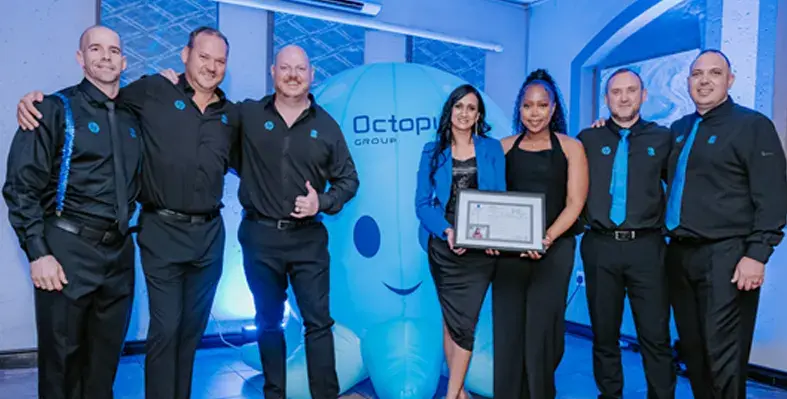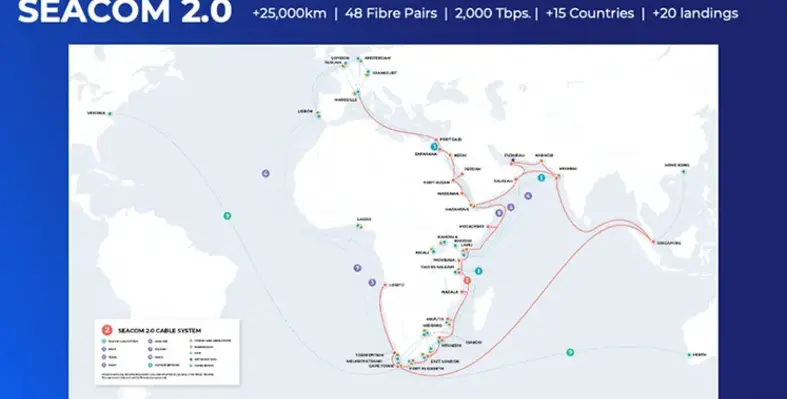In The Spotlight

NCP Chlorchem and Terra Firma unveil one of South Africa’s largest industrial behind-the-meter solar programmes at Johannesburg site. (Image source: NCP Chlorchem)
NCP Chlorchem, one of South Africa’s leading producers of chlorine and essential water treatment chemicals, has partnered with Terra Firma , a top developer of commercial and industrial solar and battery-storage projects, to launch a 27 MWp multi-phase solar initiative
This programme ranks among the largest standalone behind-the-meter solar installations in the country and will power NCP’s primary manufacturing site.
The site is designated as a National Key Point due to its vital contribution to providing safe, potable water to millions across South Africa. The solar rollout will meet a considerable portion of the facility’s power needs, with several phases already operational. More capacity is expected to be added in early 2026, and the full programme is projected for completion by the end of that year.
As core industries navigate high electricity prices, grid instability and increasing demands to cut carbon emissions, onsite renewable energy is becoming an essential part of long-term operational and financial planning.
NCP’s production processes require substantial amounts of energy, making reliable long-term energy supply and emissions reduction fundamental to its sustainability agenda. The company began its solar partnership with Terra Firma in 2023 through a 1.1 MWp pilot system, installed under earlier regulatory constraints that capped project size. After the pilot proved successful, NCP progressed to a 10 MWp second phase consisting of rooftop, carport and ground-mounted systems, now nearing commissioning. Construction of an additional 17.5 MWp is underway, bringing the total solar capacity to 27 MWp.
“As a producer of essential chemicals used in water and sanitation, sustainability is central to how we operate,” said Schalk Venter, managing director, NCP. “Working with Terra Firma has allowed us to lower our carbon emissions and manage long-term energy costs more effectively. It’s a major step in building a more resilient and sustainable future for our operations.”
“As South Africa’s energy transition accelerates, more large energy users in complex industrial sectors are turning to onsite renewable systems to meet their cost and sustainability targets,” said Grant Berndsen, CEO, Terra Firma.
“Supporting a facility as vital as NCP’s, where uninterrupted operations are essential to public health, highlights the importance of getting these projects right. Integrating a 27 MWp solar system into a live chemical production site demands careful planning and collaboration, with the highest possible safety standards and processes. The success of this programme shows how renewables can be delivered effectively within such a high-stakes environment. It sets a benchmark for secure, compliant industrial decarbonisation.”
In a momentous step for the local industrial gearbox and drives market, SEW-EURODRIVE South Africa has formally opened a new service and repair facility alongside its headquarters in Aeroton, Johannesburg
“For the first time, customers can have all aspects of their industrial gearbox dealt with in one place – and to the highest OEM quality standards,” commented Raymond Obermeyer, managing director of SEW-EURODRIVE South Africa.
“This allows us to offer unprecedented warranties on service work, giving the market peace of mind, quicker turnarounds and enhanced uptime on their repaired and refurbished units.”
The company has invested almost R385 million (approx. US$22.5mn) in the new 17 000 m² facility, where construction began a year ago. Significantly this followed just years after company built its R500 million (approx. US$29mn), 26 000 m² head office complex in Aeroton, into which it expanded in 2022. These developments form part of SEW-EURODRIVE’s proactive investment in added service capabilities across the world, which amounted to €1 billion (approx. US$1.16bn) in 2024 alone.
Obermeyer explains that in an unprecedented move the new service facility marks the end of an era in South Africa in which industrial gearbox users would have to involve multiple service providers in a single repair or refurbishment contract.
“The expertise and equipment in this facility allow SEW-EURODRIVE to conduct all aspects of a drivetrain repair – from the gearbox and coupling to the motor, steelwork and electronics,” stated Obermeyer. “We now have all this capability at our disposal, which is gamechanging in terms of quality, reliability and warranties.”
He highlights that the investment in skills and sophisticated hardware now gives the company comprehensive control over the repair process and the results.
“Previously, we were often limited by the fact that other players were involved in the work on many service interventions – and we could not take responsibility for their level of workmanship,” Obermeyer explained. “As a world class OEM and with our steadfast commitment to quality processes and components, we can now offer warranties of two years on our repairs and refurbishments. This has never been possible before and represents a significant and high-value development for customers all over Africa.”
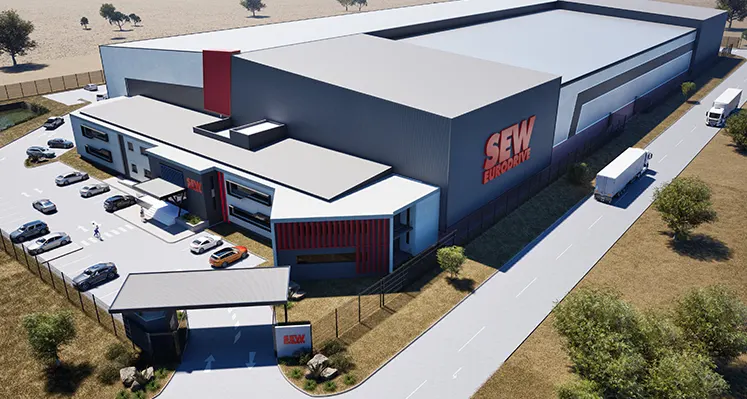 The new service centre will even conduct work on gear units from other manufacturers, he notes, given the depth of the experience and infrastructure at SEW-EURODRIVE’s new world class service and repair facility. Over 65 additional technical staff are in the process of being brought on board at the site including engineering managers, field service engineers and artisans in various specialised disciplines.
The new service centre will even conduct work on gear units from other manufacturers, he notes, given the depth of the experience and infrastructure at SEW-EURODRIVE’s new world class service and repair facility. Over 65 additional technical staff are in the process of being brought on board at the site including engineering managers, field service engineers and artisans in various specialised disciplines.
“Our centre is being equipped with the some of the most experienced skills in the local market, and our in-house DriveAcademy is busy finetuning their expertise in line with our wide range of drive solutions,” Obermeyer remarked.
Fully equipped with the latest technical infrastructure, the work of the new facility will include vibration analysis and diagnostic testing for motors and drives as well as equipment for 3D scanning and CNC machining. Winding machines will allow for motors to be rewound in-house and tested in line with SEW-EURODRIVE world class OEM standards.
“The facility will also include a fabrication department, so that we don’t have to outsource aspects like base plates, flanges, guards and other steelwork,” he said. “With the capacity to do our own cutting, bending and welding, this department allows us to conduct all this work in-house – speeding up turnaround times and ensuring constant quality control.”
Obermeyer concludes that the breadth of in-house services and engineering equipment at the SEW-EURODRIVE service and repair centre represents a significant investment in the re-industrialisation of the local economy – allowing customers to optimise the longevity and performance of their drive systems and is aligned with the company’s commitment to strengthening its position as the leading industrial gearboxes and drives provided on the African continent.
-
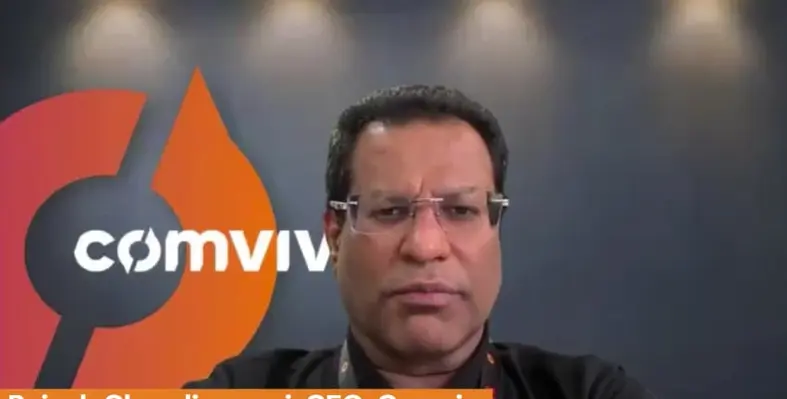
-
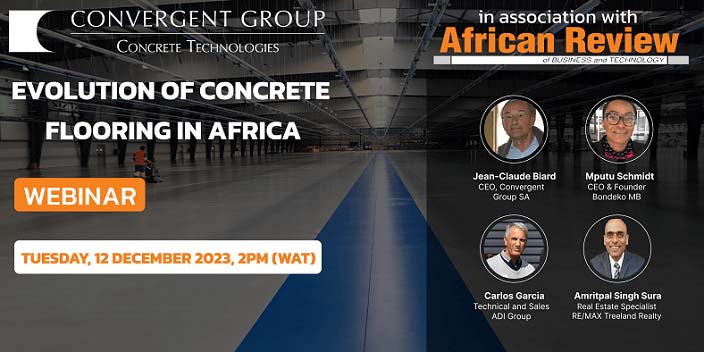
In the final webinar of its African Review-hosted 2023 campaign, Convergent Group explored its modern, eco-friendly concrete solutions for African projects
Such solutions – delivered to cut maintenance costs by eliminating hazardous silicate products – were showcased by company experts in the form of Jean-Claude Biard, SEO of Convergent Group SA; Mputu Schmidt, former CEO of Convergent Group SA and founder of Bondeko MB (exclusive distributor of Convergent Group in Africa); Carlos Garcia, technical and sales for ADI Group (Spanish distributor for Convergent Group); and Amritpal Singh Sura, external consultant for flooring treatments, former distributor of Convergent products in the Middle East.
“A number of projects we were doing in the Middle East required protection,” remarked Sura. “Longevity of protection requires a system which basically impregnates and becomes a densified surface as opposed to something which is topical and lifts off due to moisture migration. I found that being exposed to Convergent, it was important to stay focused on those systems in the Middle East. Jean-Claude, Mputu and I met several times in Dubai and there was emphasis on providing systems which were affordable and still ending up having a robust, lasting longevity of product. So you are not spending money all the time in order to maintain the finishes which you have already paid for.”
Over the course of the session, the participants guided the audience through the potential of cutting-edge lithium silicate technology for enhancing the protection of concrete surfaces, maximising cost-effectiveness and meeting sustainability targets.
-
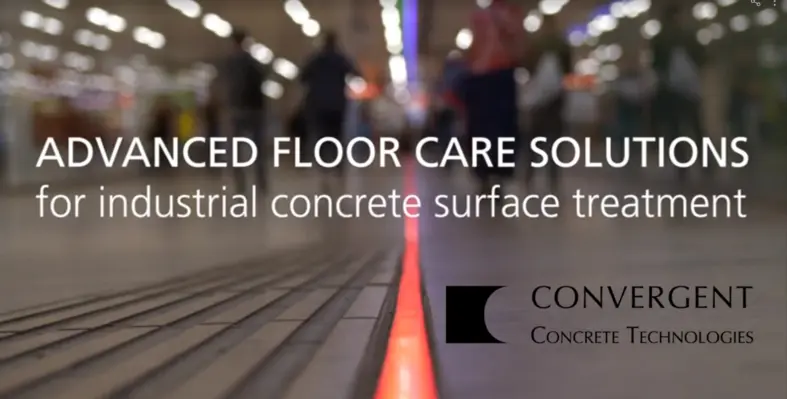
In a comprehensive webinar hosted by African Review, a panel of professionals associated with Convergent Group explored new generation lithium silicate technology and why it is emerging as the optimum solution for concrete floor protection.
Robert Daniels, editor of African Review, was joined by Jean-Claude Biard, CEO of Convergent Group; Mputu Schmidt, former CEO of Convergent and founder of Bondeko MB, an exclusive distributor of Convergent; Hicham Sofyani, president of Texol; Carlos Garcia, technical and sales for ADI Group; and Marc Puig, commercial manager of Comace Import.
Each providing a unique angle, the panellists combined to provide a masterclass around concrete treatments and the increasing challenges around them, explaining to attendees how to choose the right formula for their requirements and touching on issues such as why lithium densifiers are better than sodium and potassium densifiers.
Throughout the session, those watching were treated to informative case studies showcasing how Convergent eco-friendly products are increasing abrasion resistance, raising ease of maintenance, and ensuring the highest quality gloss retention.
By the end of the webinar, a majority of attendees (many of which had not had much experience with Convergent) expressed their interest in using the company’s new generation lithium silicate technology with the rest indicating their desire to learn more about Convergent and its products. Watch the webinar, in full, to discover why viewers were convinced and learn more about advanced floor care solutions for your operations.
-

Presenting on an African Review-hosted webinar, Martin Provencher, global industry principal for mining, metals and materials at AVEVA, explored the digital transformation of mining operations and its impact on sustainability.
“Sustainability is becoming a key aspect for mining operations,” remarked Provencher. “If we look at the latest EY research on the top ten business risks and opportunities for mining and metals globally in 2023, ESG remains at the top. Of course, most companies have environmental goals or are expected to reach a net zero emission by 2050, which is a pretty aggressive target. Many of them are targeting 30% reduction by 2030; seven years from now. So there is a lot of action that needs to take place quickly to get there. It is possible to get there, but we need to make sure we are doing this correctly.”
Fast becoming a huge part of ESG initiatives is fleet electrification where particular progress is being made in underground mines. While some countries are certainly more advanced than others here, Provencher noted that 40% of total emissions from the mining industry come from diesel trucks, making EVs a very attractive low-hanging fruit for companies to pursue.
There are, however, a number of challenges associated with bringing in electric vehicles which remains a barrier for introduction. One of the predominant reasons, is the limited range of EVs against diesel counterparts. To mitigate this, Provencher continued, data management is key and ensuring a strong grasp of real-time information coming in will show operators when machinery needs to be charged, allowing them to plan effectively for maximum efficiency on site.
Indeed, this is but a small advantage that digitalisation can bring to the mining industry as it grapples to meet ESG goals while achieving production targets. By getting a better grip of their data and using it to empower tools such as artificial intelligence, advanced analytics and machine learning, companies can achieve tangible benefits such as reduce downtime, enhance worker safety, cut operating costs and, of course, ensure compliance with environmental regulations and targets.
Through the course of the webinar, Provencher outlined this in more detail and explored AVEVA’s suite of cutting-edge software solutions, specifically designed to help mining companies make progress on their digitalisation journey and empower their operations.
Watch the full webinar, completed with detailed case studies and an insightful Q&A session.
-

-
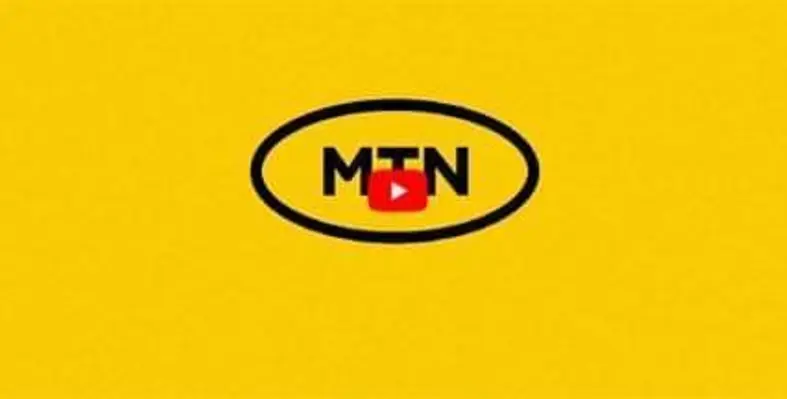
-
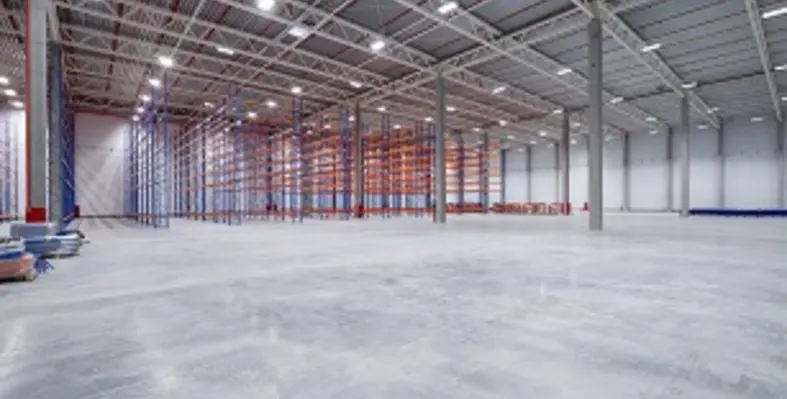
Convergent, in association with African Review, has held a detailed webinar exploring the usage and effectiveness of lithium silicates and densifiers over traditional methods of concrete surface management which often struggle to meet the increasing challenges posed by concrete surface management.
Convergent experts including Mputu Schmidt, CEO of Convergent; Carlos Garcia, product manager end-user solutions, construction chemicals, Spain and Portugal for the RD Group; Matteo Mozzarelli, CEO of concrete Solutions Italia; and Jean-Claude Biard, global senior executive for the Convergent Group, presented across the session.
Together, they delved into the latest cost-effective application methods for long lasting finishing of concrete that can help reduce maintenance costs and avoid unexpected repair action. In addition, they examined the advancements in technologies that can sustain increased abrasion resistant stains and ensure gloss retention to the highest quality.
As part of the webinar, the representatives explored case studies including a case in DRC where a medical centre had been constructed with a low-quality concrete floor. The customer was considering completely replacing the floor but instead, Convergent put forward a special treatment with its 244+ Pentra-Sil lithium hardener, densifier and sealer. With this solution, Convergent can increase the hardness of a surface by up to 40% and therefore saved the customer significant recuperation costs over a complete replacement. Convergent were happy to report that the solution was perfect for the facility and the customer was pleased to avoid the extra construction work that would have been required for a complete replacement.
Watch the full webinar, including more information about Convergent’s innovative solutions.
Portuguese group MCA has just energised Africa's largest off-grid renewable energy photovoltaic (PV) park in Angola
The site will supply green energy to more than 136,000 people, with a production capacity of 25.40 MWp and batteries with a storage capacity of 75.26 MWh.
It is the country’s first autonomous, off-grid system with a solar source and battery bank for night-time supply – meaning that no fossil fuels will be consumed.
The inauguration was attended by Angola’s Minister of Energy and Water (MINEA), João Baptista Borges.
Manuel Couto Alves, chairman of the MCA Group, said that “the delivery of this first park, with cutting-edge technology and operating models adjusted to the evolution of local demand, represents our ability to adapt and our flexibility in responding to specific contexts.”
The project, with more than 40,000 solar panels installed, generated 300 jobs and enable annual savings of around 10 million litres of fuel, avoiding the emission of 37 tonnes of CO2 using renewable energy.
“For us, this project represents not only a technical challenge overcome with excellence,” added Alves, “but also a significant transformation in the quality of life of the communities involved. It is with a sense of accomplishment that I see people's homes lit by green energy.”
The financing for the project was structured by the UK’s Standard Chartered Bank with the support of German Export Agency, Euler Hermes, which granted a guarantee of around €1bn reinsured by Cosec and K Sure, the Portuguese and Korean export credit agencies (ECA).
The public electricity production company, PRODEL Ep, is the promoting entity.
The Angolan municipality of Cazombo, with a population of around 411,074 inhabitants, is the capital of the province of Moxico Leste.
The commissioning of the new park represents the first major source of electricity production and distribution in the region.
The Cazombo photovoltaic park forms part of a broader Rural Electrification Project in Angola that began in 2023 and is expected to be completed in 2026.
As well as MCA Group, it involves the Angolan government through the Ministry of Energy and Water and the Ministry of Finance, as well as a consortium of banks represented by Commerzbank AG as agent, and the German ECA, Euler Hermes.
As part of this project, MCA will also build 46 isolated solar mini grids to benefit more than one million people in 60 communes in the interior of the country, located in the provinces of Malanje, Bié, Lunda-Norte, Lunda-Sul and Moxico.
Photovoltaic power of 256MWp and 595 battery storage will be generated, and more than 200,000 household connections will be made.
Read more:
OCP Green Energy commissions Morocco's largest solar project
Mitrelli Group completes Angola's Quibala substation
Africa construction market drives Mota-Engil growth
Cementir Group has expanded its global decarbonisation efforts with the introduction of two lower-carbon white cement products under its D-Carb range
Produced in Egypt by Sinai White Cement Company, the new variants are now available across Middle East and Africa (MEA) markets.
The offerings include a Limestone Portland cement that meets CEM II/A-LL 52.5N EN197-1 requirements with an approximate 10% clinker reduction, and a CEM II/B-LL 42.5N option featuring around 20% clinker reduction when compared to the widely used Aalborg White CEM I 52.5R.
Designed to support industrial users in accelerating their decarbonisation pathways, the launch provides MEA customers with a practical shift toward lower-carbon construction materials without affecting performance, production efficiency or aesthetic outcomes.
“In 2024 and early 2025, we progressively introduced D-Carb products across Europe and APAC region, including Australia, where we have received positive feedback from diverse industry segments. We are pleased to see D-Carb enabling customers to meeting emerging low carbon requirements in building and urban infrastructure projects, while continuing to deliver the high performance and architecture aesthetics expected of white cement.” said Michele Di Marino, chief sales, marketing and commercial development officer of Cementir Group.
“Today, extending this portfolio to MEA with two tailored variants represents an important milestone in Cementir’s journey toward net-zero emissions by 2050. As the building and construction sectors worldwide increasingly prioritize decarbonization, these products reinforce our commitment to low-carbon solutions aligned with regional decarbonization targets.”
Stefano Zampaletta, Group Product and Solution Manager at Cementir Group, added, “The introduction of the two D-Carb® variants in MEA highlights our understanding of the diverse application requirements for lower-carbon materials in the region. Achieving reduced carbon footprints while maintaining the good standard of performance expected of white cement is a complex challenge, but these products demonstrate our capability to deliver both, supporting a shared ambition for sustainable construction across entire value chain.”
“MEA markets are rapidly embracing sustainability, and the arrival of D-Carb® positions us to lead this transition. By combining lower carbon emissions with the performance expected of white cement, we are setting a new benchmark and opening new opportunities for responsible construction in the region,” concluded Abdel Hamid Gadou, commercial director of Sinai White Cement.
Zipline, the U.S.-based robotics company operating the world’s largest autonomous delivery network, has signed a landmark agreement with the U.S. Department of State to significantly expand its drone-powered medical logistics services across Africa
The initiative aims to triple the number of hospitals and health facilities served, from 5,000 to 15,000, ultimately giving as many as 130 million people rapid access to blood, medicines, and other essential supplies.
The partnership is structured under a first-of-its-kind pay-for-performance model, through which Zipline may receive up to US$150mn to scale its AI-driven, robotics-enabled delivery infrastructure. African governments using the service will pay up to US$400mn in performance-based fees, with funds released only upon signing expansion agreements that guarantee long-term service commitments.
Keller Rinaudo Cliffton, CEO and co-founder of Zipline, emphasised the significance of the collaboration, stated, "We started Zipline to build a logistics system that serves all people equally…today, the U.S. government is doubling down on our work." Jeremy Lewin, Under Secretary of State, added: "This partnership is an example of the innovative, results-driven partnership at the core of the America First foreign assistance agenda."
Zipline’s system, designed and manufactured in the U.S., has completed 1.8 million autonomous deliveries since 2016 with zero safety incidents. Independent evaluations highlight substantial improvements in health outcomes, including reduced maternal mortality, fewer stockouts, and increased immunization coverage. In many regions, Zipline has cut delivery times from 13 days to under 30 minutes.
African governments have funded Zipline’s services for years, and this expansion amplifies their existing investments. The agreement also marks a new chapter in commercial diplomacy, integrating U.S. technology into global health infrastructure. Rwanda is expected to be the first country to formalise its participation.
The model ensures that U.S. financing will be deployed only after countries commit to expansion targets. Each new Zipline hub will serve as a permanent logistics centre staffed entirely by local employees, supporting skilled job creation and economic development.
Rwanda’s minister Paula Ingabire affirmed the impact of past collaborations, stated, "We have witnessed the extraordinary impact of drone delivery saving time, saving money, and saving lives." Nigeria’s health minister, Muhammad Ali Pate, echoed the sentiment, noting Zipline’s potential to support a "healthier, more equitable future," while Côte d'Ivoire’s health minister Pierre Dimba emphasised the service’s alignment with national goals for rapid, equitable access to essential health products.
As autonomous logistics currently reaches less than 1% of the global population, Zipline and its partners view this initiative as a pivotal step toward closing that gap. The State Department hopes the model, paying for measurable results and fostering sustainable national ownership, can be replicated by other donors and development organisations worldwide.
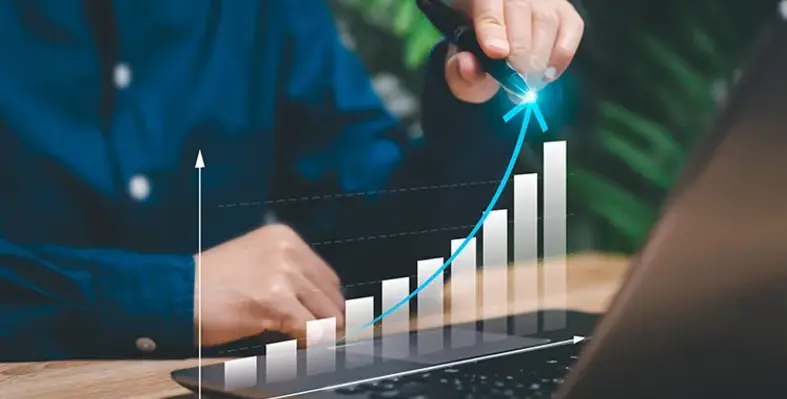
AfDB and Algeria’s Knowledge Economy Ministry partner to scale African startups and SMEs, with fresh funds and policy support
The African Development Bank (AfDB) and Algeria’s Ministry of Knowledge Economy, Startups, and Micro-Enterprises have agreed to deepen cooperation to accelerate the growth of startups and small and medium-sized enterprises (SMEs) across Africa
The announcement came at the close of the fourth edition of the Intra-African Trade Fair (IATF 2025), hosted in Algiers from 4 to 10 September. Leading the Bank’s delegation, Ousmane Fall, Acting Director of the Industrial and Trade Development Department, highlighted the AfDB’s central role in unlocking finance for African businesses. “Supporting small and medium-sized enterprises and startups is one of the key pillars of our work, as defined in the Four Cardinal Points of the Bank group’s new president, Dr Sidi Ould Tah,” said Fall. He added, “The Bank will support SMEs through an innovative approach that combines new financing instruments, advisory services, and policy reforms to promote their emergence across the continent.”
Strengthening private sector engagement
Ahead of discussions with Minister Noureddine Ouadah, the Bank delegation met with Algeria Venture, the state-backed startup accelerator. Both sides agreed to enhance cooperation, particularly by linking Algerian startup funding mechanisms with leading private equity and venture capital funds. They also confirmed plans to jointly take part in the African Startup Conference, scheduled in Algiers from 6 to 9 December 2025, which aims to promote innovation, strengthen networks, and attract investment on a continental scale.
Closing IATF 2025, Minister Ouadah announced the launch of a new investment fund for African startups, an initiative championed by Algerian President Abdelmadjid Tebboune, underlining Algeria’s commitment to prioritising youth and innovation in shaping Africa’s economic future.
The AfDB’s Non-Sovereign Operations team also presented financing solutions for the private sector while pursuing new strategic collaborations. Engagements with firms such as Solewant Group, a Nigerian steel and coatings leader, illustrated the Bank’s interest in high-impact African companies.
Showcasing innovation and entrepreneurship
The AfDB further contributed to several IATF sessions, including one organised with UNDP’s Timbuktoo initiative and the African Union on “Building an Enabling Startup Ecosystem,” as well as a discussion hosted by Afreximbank’s African Research and Innovation Centre. These platforms enabled the Bank to highlight its Innovation and Entrepreneurship Lab and its flagship ENNOVA programme, which helps entrepreneurs expand their operations and access new opportunities.
The IATF Advisory Council, in which the Bank is an active participant, announced that Lagos, Nigeria, will host the fifth edition of the fair in 2027. Reaffirming its commitment, the AfDB stressed that trade, entrepreneurship, and innovation remain central to driving inclusive growth and industrial transformation across the continent.
FLS has completed a significant upgrade to its polyurethane manufacturing facility in Delmas, Mpumalanga, positioning the site as a key global hub for the production of its advanced NexGen wear-resistant material
This development forms part of a wider modernisation programme by FLS, aimed at strengthening supply chains, increasing manufacturing efficiency and enhancing
sustainability across its global footprint.
Brad Shepherd, director service line - screen and feeder consumables at FLS, said the investment at Delmas aligns with the company’s global strategy to standardise and optimise production processes.
“This is a milestone for us,” commented Shepherd. “We are integrating cutting edge technology and modern manufacturing methodologies across all our polyurethane plants, and Delmas is leading the way. The upgrade enables us to respond more quickly and reliably to customer needs across Africa, the Middle East and Europe.”
The centrepiece of the upgrade is the introduction of purpose-built infrastructure to produce NexGen screen media - a polyurethane material developed by FLS to deliver extended wear life, reduced maintenance and improved operational efficiency. In on-site trials, screen panels made from NexGen have demonstrated up to three times the wear life of conventional rubber and polyurethane products, making it a gamechanger for industries that rely on high performance screening solutions.
Warren Walker, head of global manufacturing - polyurethane operations at FLS, explained that Delmas is the first of the company’s five global polyurethane plants to complete this transition. “We have installed new, latest generation polyurethane machines, precision tooling and dedicated preheating ovens for inserts,” he said. “This allows us to significantly increase our output while ensuring consistent quality.”
The facility now includes two trommel screen media stations and three screen media stations, each tailored to produce NexGen products. One of the standout technologies introduced is a programmable auto- calibrating polyurethane machine capable of adjusting material hardness to suit
specific applications.
“The flexibility to produce varying hardness levels is critical,” Walker noted. “It means we can tailor our screen media precisely to the customer’s application, ensuring optimum performance and longevity.”
To complement this, a high capacity polyurethane machine capable of pouring up to 42 kg per minute is in operation at the facility. This system is particularly suited to applications requiring large volume pours, such as flotation spare parts and vertical mill components.
The Delmas facility already benefited from a significant upgrade in 2019, when a state-of-the-art six-axis machining centre was introduced for tooling precision, along with robotic welding systems for manufacturing screen media panel inserts and a CNC controlled spiral welding machine to produce wedge wire products. The latest round of investments builds on this foundation and brings the facility to the forefront of global polyurethane production capability.
Energy efficiency was a key consideration in the new layout and equipment design. “We have incorporated smart energy saving features like individual temperature control on each casting table station,” Walker remarked. “This avoids the need to heat large surface areas unnecessarily and contributes to our carbon reduction goals.”
Further supporting these goals is the installation of 300 kW of solar generation capacity at the Delmas site, completed in 2024. Plans are already in place to expand this by another 500 kW in 2026, along with the integration of a battery energy storage system (BESS), enabling greater energy independence and resilience.
FLS’s offering from Delmas extends beyond screen media manufacturing. The facility is equipped to handle the complete fabrication of vibrating screens, from raw material processing and in-house machining to assembly and factory acceptance testing. This vertical integration allows the company to deliver customised solutions with tighter control over quality and lead times.
Shepherd emphasises that FLS operates both as an original equipment manufacturer (OEM) and a screen media specialist, supplying screen panels for all types and brands of vibrating screens, feeders and trommel screens.
“We don’t just supply products,” he said. “We work closely with our customers through our network of on-the-ground specialists to assess site conditions and select the best screening media for their specific needs.”
He notes that many older processing plants are treating materials that differ from their original design specifications. In these cases, screen efficiency can often only be improved by optimising the screen media. “This is where NexGen makes a real difference,” Shepherd commented. “Combined with the correct aperture design, it allows customers to get more life and better performance from their screens.”
Unlike injection-moulded polyurethane, which can compromise the structural integrity of screen panels, FLS’s proprietary process retains superior mechanical properties, resulting in a tougher more durable product. “We have never used injection moulding because it reduces the quality of the end product,” Shepherd explained. “Our process delivers a product that stands up to the toughest operating conditions and offers lasting value.”
Walker adds that the expansion at Delmas not only supports FLS’s global operations but also contributes meaningfully to the South African economy. “Our commitment to local manufacturing is evident in the scale of our investment and the jobs we have created,” he said. “We have expanded our workforce, prioritised local recruitment and significantly grown our apprenticeship programme.”
A strong focus has also been placed on developing female artisans. In 2024, six women from the local community were recruited into a three year trade apprenticeship programme, receiving training in welding, fitting and boilermaking.
“Our investment during a period of economic uncertainty underlines FLS’s long term commitment to South Africa and to our customers in the broader EMEA region,” said Walker. “We are not just building products – we are building skills, opportunities and partnerships that will power sustainable growth for years to come.”











